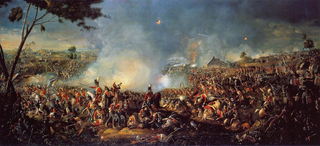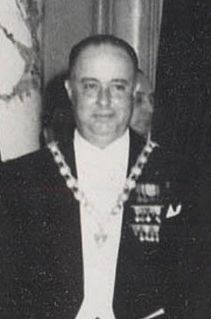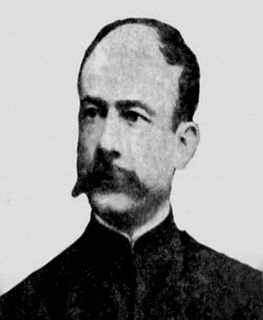| Battle of El Bramadero | |||||||
|---|---|---|---|---|---|---|---|
| Part of the United States occupation of Nicaragua, Banana Wars | |||||||
| |||||||
| Belligerents | |||||||
| Commanders and leaders | |||||||
(Initial force) (Relief force) | |||||||
| Strength | |||||||
| 36 marines one naval pharmacist 22 Nicaraguan "muleros" 99 mules [5] (Initial force) 88 marines [6] (Relief force) | 600 guerrillas 4+ machine guns [7] | ||||||
| Casualties and losses | |||||||
| 5 marines killed (two died from wounds) 8 marines wounded, four "muleros" wounded 33 mules killed, wounded, or captured [8] | 10 killed 30 wounded ("conservative estimate" for losses on 28 February 1928) [9] | ||||||
The Battle of El Bramadero, or the Battle of Bromaderos, took place between the 27 and 28 February 1928 during the American occupation of Nicaragua of 1926–1933 and the Sandino Rebellion. The battle began on the twenty-seventh when a convoy of thirty-six Marines, one American naval pharmacist's mate, twenty Nicaraguan "muleros," two Nicaraguan "'Jefe' muleros," and 99 mules [10] led by First Lieutenant Edward F. O'Day moving along the Yalí–Condega trail was ambushed by a force of Sandinista rebels led by Miguel Angel Ortez. [11]

The United States occupation of Nicaragua from 1912 to 1933 was part of the Banana Wars, when the US military intervened in various Latin American countries from 1898 to 1934. The formal occupation began in 1912, even though there were various other assaults by the U.S. in Nicaragua throughout this period. American military interventions in Nicaragua were designed to stop any other nation except the United States of America from building a Nicaraguan Canal.

A battle is a combat in warfare between two or more armed forces, or combatants. A war usually consists of multiple battles. Battles generally are well defined in duration, area, and force commitment. A battle with only limited engagement between the forces and without decisive results is sometimes called a skirmish.

The United States Marine Corps (USMC), also referred to as the United States Marines or U.S. Marines, is a branch of the United States Armed Forces responsible for conducting expeditionary and amphibious operations with the United States Navy as well as the Army and Air Force. The U.S. Marine Corps is one of the four armed service branches in the U.S. Department of Defense (DoD) and one of the seven uniformed services of the United States.
The Sandinistas opened fire from all along the mule train's right flank at 1:30 PM, while some other rebels managed to seal off "the trail to the front and rear of the convoy." [12] These Nicaraguan insurrectionists were estimated to be "at least" 600 rifles strong, armed with "a minimum" of four machine guns and "a large quantity" of dynamite bombs. [13] The Marines fell back to a ridge on the left of the trail, "leaving three of their dead behind." [14] The guerrillas advanced on the American position and hacked open the heads of the dead Marines with their machetes. [15] At 8:30, the firing from the Sandinistas decreased as the insurgents began to withdraw, although about 200 of them remained to continue harassing the Marines. [16] Some of the guerrillas spoke "irregular English" and taunted the Americans with "slurs and insults" during lulls in the fighting. [17]

A rifle is a portable, long-barrelled firearm designed for long-range precision shooting, to be held with both hands and braced against the shoulder for stability during firing, and with a barrel that has a helical pattern of grooves ("rifling") cut into the bore walls. The term was originally rifled gun, with the word "rifle" referring to the machining process of creating grooving with cutting tools, and is now used for any long handheld device designed for aimed discharge activated by a trigger, such as air rifles and the personnel halting and stimulation response rifle. Rifles are used in warfare, law enforcement, hunting and shooting sports.

A machine gun is a fully automatic mounted or portable firearm designed to fire rifle cartridges in rapid succession from an ammunition belt or magazine for the purpose of suppressive fire. Not all fully automatic firearms are machine guns. Submachine guns, rifles, assault rifles, battle rifles, shotguns, pistols or cannons may be capable of fully automatic fire, but are not designed for sustained fire. As a class of military rapid-fire guns, machine guns are fully automatic weapons designed to be used as support weapons and generally used when attached to a mount- or fired from the ground on a bipod or tripod. Many machine guns also use belt feeding and open bolt operation, features not normally found on rifles.

Dynamite is an explosive made of nitroglycerin, sorbents and stabilizers. It was invented by the Swedish chemist and engineer Alfred Nobel in Geesthacht, and patented in 1867. It rapidly gained wide-scale use as a more powerful alternative to black powder.
At dawn of the following day, of the 28 February, a force of 88 Marines led by Captain William K. MacNulty arrived on the battlefield to relieve O'Day's men, and they helped drive off the remaining Sandinistas. [18] All in all, the Marines suffered three killed, two died from wounds, and eight non-fatally wounded (in addition, four of their "muleros" were wounded). [19] One-third of their mules were killed, wounded, or captured. [20] Sandinista losses for February 28 were about 10 killed and 30 wounded (this was MacNulty's "conservative estimate"). [21]

William Kirk MacNulty was a U. S. Marine. He was a U.S. Marine Corps Second Lieutenant during World War I and saw action at the Battle of the Argonne Forest. He served as a captain during the Second U.S. Nicaraguan Campaign (1926–1933). During the Second World War, as a Lieutenant Colonel he commanded the U.S. Marine Corps defense of Guam against Imperial Japanese forces during the First Battle of Guam. He was incarcerated by the Japanese as a prisoner of war. He was promoted to Brigadier General during captivity and retired from military service in 1946. He is buried at the Golden Gate National Cemetery in San Bruno, San Mateo County, California.
A "large part" of the rebel force at El Bramadero was recruited from nearby towns and villages, with these part-time guerrillas returning to their homes and regular occupations when fighting ceased. [22]









